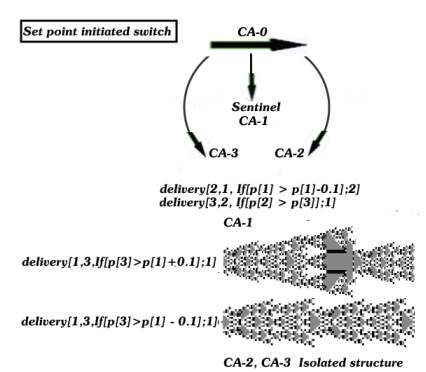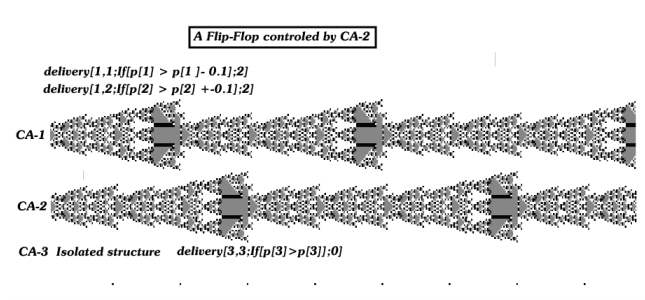 |
A
non-linear flip-flop
We continue with the directed loop.
Three functions control CA behavior:
1. delivery activation[j,0, set point, state[0, i]]
2. delivery[j, j-1, If[pa[1] > setpoint; quantity]
3. change state[state[j, i+1]] = state[0,i]]
Initially CA do not exchange resources since the set point is high .
When CA-0, reaches state i, it diminishes the set point
and activates CA-1 delivery. In the present experiment delivery is initiated
when CA-0 state= 43 (=[0, 43]). The amount of resources
which CA-2 and CA-3 deliver is small and their structure does not change.
When CA-0 reaches state=43, it initiates a change state,
and CA-1 gets its final structure (solution).
 |
 |
The delivery condition of CA-2 may contain either -0.1
or +0.1. As the number switches between the positive and the negative,
it determines CA-1 and CA-2 structure.